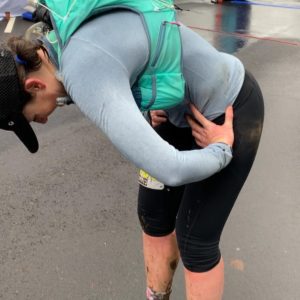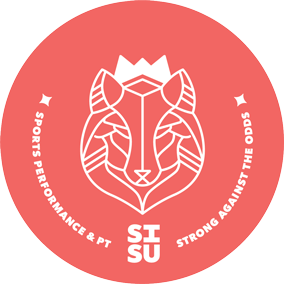5 Lessons in Training for a 25k+
Last year (2019), I began training for my first ever 25k+ (17 mile) trail run. On Saturday, I ran it, placed 15th female and 2nd in my age group. I wanted to share with you some of my experiences and what I took away from this adventure.
As a run coach, all of this is stuff I know and might coach my athletes through, and yet applying it to myself was easier said than done.
Needless to say, I didn’t die despite my training oversights. This means that I have the opportunity to refine my training moving forward. A soft reminder that we all have that same opportunity.
1. Training is about committing to yourself
My biggest fear in training for this event, was undoubtedly the training and if I could maintain consistent training habits. In fact, it was such a real and present worry that it was pretty much the only thing I cared about: just staying consistent and running at minimum 4x/week.
“Every day I set foot, I was reminded that I was worth it. Worth the time to myself, worthy of the space for myself, worth committing to healthy habits”
It turns out, my greatest joy in this entire process was the training. Getting out there, day after day (in the rain, cold weather, snow, mud and more), and committing to myself in such a way was novel.
Every day I set foot, I was reminded that I was worth it. Worth the time to myself, worthy of the space for myself, worth committing to healthy habits.
When it came to race day, I had already succeeded.
2. Pain is undoubtedly a part of training

A minor factor in my training turned out to be pain (much to my chagrin). I experienced everything from knee pain, to achilles pain (AGAIN), to acute ankle pain and hip pain.
All of which had me thinking: “imagine if you didn’t understand the ways of pain and tissue injury, how this might impact your training?”
It had me thinking of YOU.
Because this, of course, is how many of YOU feel when you feel pain. Uncertain, scared, confused, worried that you need to stop training. That your hard work your goals, your pursuits will be lost because of that feeling in your knee.
I wish I could say I skated through training scotch free, but I am only human after all. And pain, is a part of the human journey and most certainly, a part of the training experience.
3. Fueling needs to be rehearsed and may need to be thrown out the window on race day
Throughout my training, I had been rehearsing my fueling strategies using Nuun Endurance. It had worked incredibly well for my entire training cycle. I didn’t struggle with fatigue, swelling, upset stomach, or really anything that would have me think that this wasn’t the right fueling choice for me.
Come race day, I didn’t feel that great physically from the start. I was heavy, bogged down (quite literally by mud), and much slower than I had anticipated.
This meant, that the race took me about an hour longer than I had expected, and not only was I under-fueled, but I was over-hydrated, resulting in swollen hands and feet. More than likely I was dealing with hyponatremia (a condition in which sodium is depleted from your system as a result of too much water and can be quite dangerous).
Instead of stopping at aid stations to consume something tasty, I kept slogging along, worried that stopping with give up my place in the race. I ended up making it, but I’m taking it as a lesson: race day adjustments may be necessary!! More rehearsing is in my future so that I can nail down my fueling.
4. Consistent training only gets you so far
This course turned out to be hillier than I had hoped in my brain. I trained consistently but there is no doubt in my mind that I neglected hill training because I “didn’t think I needed it” (aka, I really didn’t WANT to do it).
“Consistency is the meat of your running cocktail, but specificity is like the cherry on top”
It turns out, I did need it and it was a harsh reminder to me that consistency matters, but so does specificity.
That means training hills, training fast if you want to be fast, training steady if you need to hold a pace, training on trail if you’re running a trail race, training on the road if you’re running a road race and so on.
Consistency is the meat of your running cocktail, but specificity is like the cherry on top
5. Be prepared to make adjustments to training on any given day

One thing that doesn’t really frighten me, is making adjustments to my training. I had a number of days that I would get out there and be unable to execute what I thought I was capable of doing at that time (see photo to the right: running in snow was not a part of my plan!). Particularly in the beginning.
For example: I would program in a 30 minute easy run early on in my training thinking that should be an easy feat, only to be humbly mistaken. It is pretty darn defeating thinking that what you have programmed is “easy” only to realize it’s still “hard.”
Staying patient with myself was paramount. That meant not expecting to be as fast as my former D1-soccer-athlete-self. And while I fully expect to get faster than I was as a D1 soccer athlete in my mid-30s, setting my sights unrealistically wasn’t helpful.
“Making adjustments to your training won’t set fire to the hay you’ve put in the barn.”
So, if the run felt beyond the challenge I could maintain, I did 1 of 3 things: slowed down, walked, or even stopped. Doing this while realizing it wouldn’t sabotage my entire training was key to my emotional recovery, physical recovery, and feelings of success.
Making adjustments to your training won’t set fire to the hay you’ve put in the barn. Being flexible can be a game changer when applied well.
All-in-all, this experience was incredible. I was reminded of why running brings me joy and why I’m worth every ounce of commitment this takes, and so are you.
work with me:
Are you hoping to return to consistent training? Achieve a race PR? Or get to your next race with more confidence in your ability?
Do you want to feel joy in running again?
I help women run with confidence, overcome their set backs and get back to training consistently with a smile on their face and race PRs to boot.
If you’re interested in joining the Sisu Squad, apply below or simply send me an email. Let’s connect.






